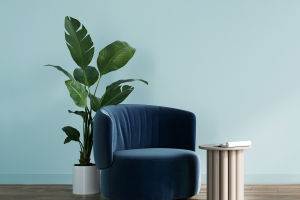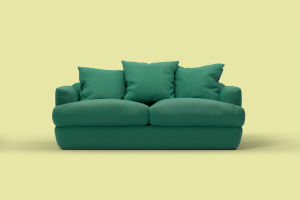In home design, the living room is undoubtedly the core area of the entire household.
As a place for gathering, relaxing, and entertainment, the living room not only represents the family's taste but also carries the functional needs of daily life.
With time, modern living room design concepts have undergone significant changes. It is no longer just about pursuing luxurious decorations, but rather about achieving a perfect balance between functionality and aesthetics. This article will delve into modern living rooms to help you better understand how to create one.
Evolution
The design concept of modern living rooms has gradually shifted from traditional complexity to simplicity and practicality. This shift is reflected in the change of decorative styles and the redefinition of functional needs.
With the fast pace of modern life, people increasingly desire a space where they can relax both physically and mentally. Therefore, modern living room design focuses more on the rational use of space and enhancing comfort.
1. The Rise of Minimalism
Minimalism has become dominant in modern living room design. By reducing unnecessary decorations and complex furniture, designers can create a more spacious and open environment.
Simplicity does not mean plainness; rather, it involves using carefully selected materials and color schemes to present an elegant aesthetic. Shades like gray, white, beige, and wood tones are widely used to create a calm and comfortable atmosphere.
2. Functionality First
The modern living room is not only a social space but also a multifunctional area that can be used for relaxation, entertainment, work, and more.
Therefore, different functional zones should be considered in the design. For example, the TV wall can incorporate storage, and the seating area can be arranged in a modular layout that allows family members to adjust the space according to their needs.
Layout and Space Utilization
Layout is one of the core elements of modern living room design. Through scientific planning, limited space can be maximized to achieve both functionality and aesthetics. When planning the layout, it's important to take into account the usage habits and lifestyle of the household members.
1. Open-Concept Layout
The open-concept layout has become a major trend in modern home design.
This type of layout typically merges the living room with the dining area or kitchen, breaking the boundaries of traditional spaces and making the overall area feel more open and expansive. This design not only enhances interaction but also makes daily life more convenient. Open-concept layouts are usually paired with minimalist furniture and decor to avoid visual clutter.
2. Modular Design
Modular design is another key feature in modern living room layouts.
Modular furniture can be adjusted according to different needs, offering strong flexibility and accommodating various spaces and functions. For example, a modular sofa can be rearranged based on the number of family members or guests, saving space while being practical.
3. Flow Design
The flow of movement in the living room is crucial to the efficiency of space utilization. A well-thought-out flow design enhances the convenience of daily activities and avoids furniture or decor blocking pathways. In modern living rooms, ample space is usually left for easy passage between different functional areas.
Conclusion
Modern living room design has transcended the traditional concept of decoration and has become a symbol of the perfect fusion of function and aesthetics.
In the future, with the further development of technology, modern living rooms will place more emphasis on the combination of personalization and human-centered design, meeting people's growing desire for a higher quality of life. Regardless of the size of your space, with proper planning and design, your living room can also become the warmest and most comfortable part of your home.


